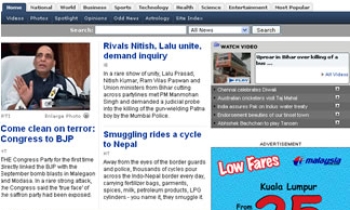
The Hull Daily Mail and twin title the East Riding Mail have unveiled a host of changes after conducting research into reader habits. The new approach, labelled the 'Newspaper for Now', aims to build on the Mail's current daily circulation of 71,000. It includes 'in short' boxes on all page leads, which readers can use to pick up the main points of the story.
There is also a 'paper in a page' on page two, which provides an at-a-glance digest of the whole paper. Web links have been introduced so readers can find out more about the story or feature by going straight to the most relevant websites, and 'What happens next?' panels interpret or predict the next stage or stages in the story.
All page leads have to be illustrated with pictures to ensure that every page has a clear focal point - and secondary stories are now being converted into news in brief.
The changes were made after research found readers wanted more value from their time reading the Mail.
A dummy featuring the changes was tested on groups of regular and irregular readers before the launch. Almost all of them said they made the layout of the paper more appealing, made it less likely that they would miss things, and helped them to be better informed.
Editor John Meehan said he believed the Mail had gone further than any other regional paper in responding to changing reading habits. He said: "These changes are a huge stride forward in making the Mail even more relevant and appealing to our readers. They also give the paper a very fresh, contemporary feel.

"Our journalists have adjusted brilliantly well to writing and presenting news, features and sport in a very different way." But he stressed that, unlike some other regional papers, there was no move away from live news.
He said: "We have four editions a day, with the latest printing at 1.15pm, and we are constantly updating them to ensure they contain the latest, and most relevant, news. "We also frequently publish breaking news editions to capitalise on major newsbreaks outside our normal publishing times."
In the week that the new-look paper was launched, the Mail had a major, local story the disappearance of 22-year-old JobCentre worker Joanne Nelson and responded with coverage on up to seven pages a day, with frequent edition changes as the police investigation developed. On the day the story broke, the Mail put on 1,700 extra sales.
John said: "We believe in producing newspapers which are accessible and digestible for readers but which are also strong on in-depth reporting and analysis. We also believe in hard news for the simple reason that major, breaking stories sell our newspapers."
He said that, far from reducing the proportion of the paper that was read, the 'in short' boxes were encouraging more people to read the full versions of stories. He said: "We have to accept that readers are more selective about the days that they read regional papers and how they read them. "We have to package our content differently to reflect these habits and also to help readers to access further information online.
"Frankly, I don't mind if a reader only reads the 'in short' box on a story. If that gives them the information they need, great. Better that than for them to turn the page without reading the story at all."









